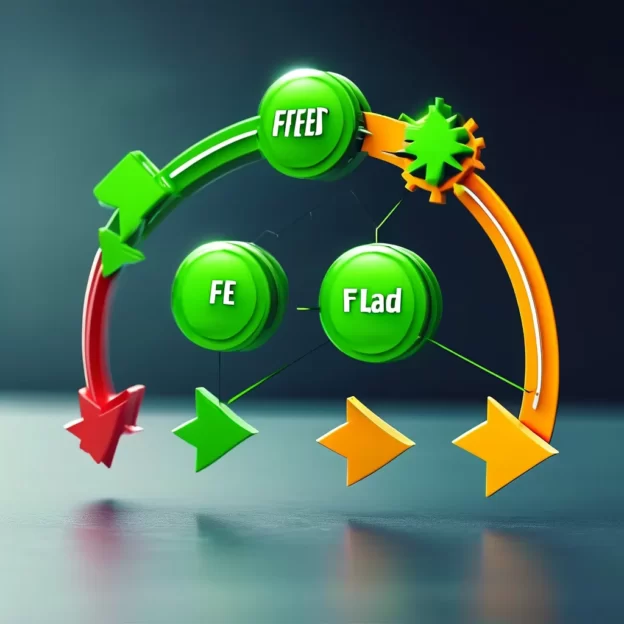Unlock Your Kroger Rewards: Share Feedback & Get Bonus Fuel Points
Welcome, valued members of the Kroger community! Kroger, one of America’s leading retailers and a cornerstone for grocery shopping across the nation, is always striving to enhance the shopping experience for its millions of customers. As a loyal Kroger shopper, you play a vital role in this improvement process, and your feedback is not just valued, it’s rewarded. Specifically, sharing your honest insights through the official Kroger feedback channels can unlock a tangible benefit for you: bonus Kroger Fuel Points. This guide will walk you through everything you need to know about providing feedback on wwwkroger com feedback, how it contributes to a better shopping experience, and how you can maximize your rewards.
Why Your Feedback Matters to Kroger
You might be wondering, “Why should I take the time to provide feedback? Isn’t Kroger a large corporation?” The answer is simple: even the biggest companies rely on the direct input from their customers to innovate, improve, and stay relevant. Kroger understands that your experience – from the produce section to the checkout line – is paramount. By actively listening to customer feedback, Kroger gains invaluable insights into operational areas that need enhancement, product offerings that could be better, and services that might be falling short.
Driving Service Enhancements: Kroger uses customer feedback to identify pain points and opportunities for improvement across its vast network of supermarkets, pharmacies, and fuel stations. Whether it’s comments about store layout, checkout wait times, product availability, or employee interactions, your input directly informs decisions that can lead to smoother operations and a more pleasant shopping trip for everyone.
Influencing Product Decisions: Kroger is constantly evaluating its product selection. Feedback can highlight items that are consistently popular, products that are frequently out of stock, or requests for new private-label offerings. This helps the buying teams ensure that the shelves are stocked with items you love and are looking for.
Refining Technology and Processes: From the mobile app experience to online ordering and even self-checkout kiosks, technology plays an increasingly important role in the grocery journey. Feedback on usability, functionality, and digital platforms is crucial for Kroger’s developers and IT teams to build better, more intuitive tools.
Fostering Customer Loyalty: When customers feel heard and see tangible changes implemented based on their feedback, it fosters a sense of connection and loyalty. Knowing that their opinions matter encourages continued patronage and strengthens the relationship between Kroger and its customers.
How to Provide Kroger Feedback and Earn Your Fuel Points
Now that you understand the importance of your input, let’s explore the practical ways to share your feedback with Kroger and earn those valuable bonus Fuel Points. Kroger provides several avenues for customer feedback, each potentially offering rewards.
The Primary Method: The KrogerFeedback Survey
The most direct link between customer feedback and Kroger Fuel Points is through their dedicated survey program. Kroger actively encourages customers to visit the official survey website, often referenced through links like wwwkroger com feedback or similar branded portals (always ensure you’re on the official site, sometimes found via www.kroger.com/feedback or a partner site like KrogerFan for facilitated access). Here’s how it typically works:
- Locate the Survey Portal: Look for official links or announcements on your Kroger receipt, within the Kroger mobile app (often under a ‘Feedback’ or ‘Community’ section), or directly on the Kroger website. KrogerFan also offers a user-friendly interface to access the official survey.
- Provide Basic Information: Usually, you’ll need to enter details from your receipt, such as your store name, store number, and the date of your visit or purchase. This helps Kroger associate your feedback with the specific location and timeframe.
- Complete the Survey: The survey is designed to be concise, typically taking just a few minutes to complete. You’ll be asked about your recent shopping experience, specific store visits, product satisfaction, employee service, and potentially your views on other aspects like fuel service (if applicable at your location).
- Receive Your Bonus Fuel Points: The key incentive! Completing this feedback survey often grants you an immediate reward: 50 Kroger Fuel Points. These points are added directly to your Kroger Rewards account and can be redeemed for discounts on groceries, pharmacy purchases, and fuel at participating Kroger fuel stations.
Additional Feedback Channels
While the survey is the main route for earning points, Kroger also values feedback through other means:
- Customer Comments Form: Many Kroger stores have physical comment cards or online forms for customers to report specific issues or make suggestions. While this might not directly link to immediate Fuel Points, your input still contributes significantly to Kroger’s improvement efforts. Kroger aims to respond to these comments promptly.
- Social Media: Kroger actively monitors social media platforms for customer comments and reviews. Sharing your experience (positive or negative) on their official social channels can also be impactful, though point rewards via social media are less commonly offered compared to the structured survey.
- App Feedback Features: The Kroger app itself may have feedback options within it, allowing you to comment on specific features or the overall app experience.
Maximizing Your Kroger Fuel Points: Beyond the Survey
Earning 50 Fuel Points for completing a short survey is a great start, but there are many other ways to accumulate points and make the most of your Kroger Rewards membership:
Every Purchase is a Point Generator: Kroger Fuel Points are earned automatically with every purchase you make using your Kroger Rewards card. The standard point rate is typically 1 point per dollar spent on groceries and eligible pharmacy items. Non-eligible grocery items and some fuel purchases may not earn points, so it’s always good to check the current terms.
Double Points Opportunities: Kroger frequently runs promotions offering double Fuel Points on specific days, categories of items (like produce or dairy), or during particular events. Keep an eye on your receipts, emails, and the Kroger website for these bonus earning opportunities.
Special Promotions and Sign-Up Bonuses: New members often receive a welcome bonus, typically a set number of points. Additionally, Kroger periodically offers limited-time promotions or targeted bonuses for specific actions, such as making a certain number of purchases, trying new app features, or completing multiple feedback activities.
Pharmacy Purchases: Don’t forget that eligible purchases at the Kroger Pharmacy also earn Fuel Points. This includes prescriptions, over-the-counter medications, health and wellness items, and beauty products.
Mobile App Usage: Utilizing features within the Kroger app, such as price check, list builder, mobile ordering, or digital coupons, may sometimes qualify for bonus points. Check the app for specific details on these promotions.
Refer Friends and Family: Kroger Rewards programs sometimes offer incentives for successful referrals, which can translate into additional points for you.
The Power of Honesty: Providing Effective Feedback
To truly benefit Kroger’s improvement efforts and potentially earn rewards, your feedback should be specific and honest. Vague comments are less helpful than detailed descriptions of your experience. When completing the survey:
- Be Specific: Mention the store name, date of visit, and describe exactly what you liked or disliked. Was the checkout lane staffed quickly? Was a particular product missing? Was there an issue with a specific employee?
- Be Constructive: While it’s important to voice concerns, offering suggestions for improvement adds significant value. How might things be better?
- Be Honest: Your genuine experiences, even if they are negative, provide crucial information for Kroger to address problems. Honesty is the foundation of helpful feedback.
- Follow Up if Necessary: If you have a specific issue that isn’t addressed adequately, use the comment forms or contact Kroger customer service for further assistance.
Conclusion: Be a Part of the Kroger Improvement Journey
As a dedicated Kroger shopper, your feedback is a powerful tool that helps shape the future of your local grocery store. By participating in the official KrogerFeedback survey, you directly contribute to making the shopping experience better for everyone, and in return, you receive the tangible benefit of bonus Kroger Fuel Points. Remember, even small moments of frustration or appreciation can provide valuable insights. So, next time you have a thought about your Kroger visit, take a few minutes to share it. Visit the official wwwkroger com feedback portal, provide your honest assessment, and watch your Fuel






















 *Diagram illustrating the feedback loop: LLM Agent proposes action -> Opponent responds -> Utility calculated based on outcome -> Feedback provided -> Agent updates policy/model*
*Diagram illustrating the feedback loop: LLM Agent proposes action -> Opponent responds -> Utility calculated based on outcome -> Feedback provided -> Agent updates policy/model* *Chart showing potential applications of optimized LLM agents in bargaining*
*Chart showing potential applications of optimized LLM agents in bargaining*




